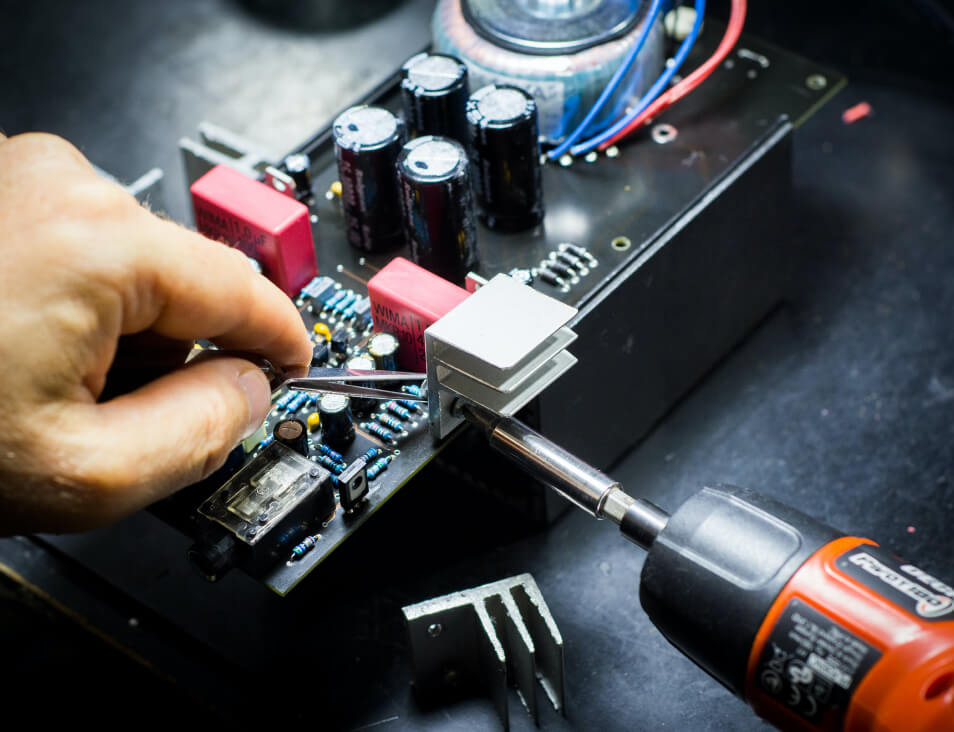The Government of India took stringent measures to restrict Chinese investments as Sino – Indian border tensions escalated in 2020. The Ministry of Commerce and Industry amended the Foreign Direct Investment (FDI) Policy through Press Note 3 in 2020 and enforced it through the Foreign Exchange Management (Non-Debt Instruments) Amendment Rules 2020.[i] The amendments restrict investments from countries sharing a land border with India, or if the beneficial owner for investments in India is situated in one of these countries, without government approval. Subsequently, the Government of India also decided not to allow any investments from China to India.[ii] In fact, in March 2023, India’s Finance Minister informed Parliament that 54 FDI proposals from China and Hong Kong were received during the last year, and were pending with the Government.[iii]
Global and domestic players in the electronics sector did not welcome Press Note 3. The National Council of Applied Economic Research and Confederation of Indian Industry in their report titled ‘Building India’s Export Competitiveness in Electronics–2025-26’ called for easing regulations for investments from China.[iv] The report highlighted that the deep supply chains built by China in the electronics manufacturing sector would play a crucial role in increasing the technical know-how and competence of Indian manufacturers, if Chinese investments are allowed in India. The India Cellular and Electronics Association (ICEA) expressed reservations about the Government’s move as it would discourage investments from China.[v] The ICEA also noted that this change would affect the goal of the government to promote electronics manufacturing in the country through its production linked initiative schemes (PLIs).[vi]
Due to requests from industry bodies and domestic and global electronics product players, the government seemingly tweaked its stance on Chinese investments in the sector, indicating in March 2023 that with an Indian majority joint venture partner, Chinese companies could set up component manufacturing plants in India.[vii]
India’s current position
The Government of India reportedly asked companies to provide a list of Chinese suppliers of companies that would like to shift some of their capacities to India, for preliminary screening.[viii] However, this proposal for the shift came with a pre-condition that the Chinese companies would have to enter into joint ventures with Indian companies and cede the majority stake of 51% to their Indian counterparts. Reportedly, Indian industry also sought a graded method of implementation of the policy: an FDI cap of 51% in passive and active components, camera modules, connectors, ringers, and others; 49% in mechanics, microphones, keypads; and 24% in other areas like packaging.[ix] The Chinese investors would then have to approach the Government of India for final FDI clearances as per the requirements under Press Note 3 of 2020 to begin manufacturing. The government is also likely to evaluate the applications on their merit to ensure that the joint ventures positively contribute to the electronics manufacturing sector in India.[x] India’s ability to create robust supply chains for these components has not been clarified so far.
The change in India’s position to allow Chinese investments is based on multiple factors. India intends to expand its electronics manufacturing and exports sector to US$ 300 billion by 2026.[xi] It has introduced multiple initiatives (PLI for information technology hardware, Modified Electronics Manufacturing Clusters Scheme, and Scheme for Promotion of Manufacturing of Electronic Components and Semiconductors) to attract global manufacturers in the electronics sector to India.[xii] These initiatives were introduced in the background of several leading global companies adopting the China Plus One strategy to diversify their global value chains.[xiii] However, Indian companies may not be able to effectively utilize these benefits due to limited manufacturing capacity and technical know-how.[xiv] India contributes only 2% to the market share of the global electronics manufacturing industry in comparison to China that contributes 47%.[xv]
Impact and reactions by the industry
India’s attempt to change its approach to FDI in the electronics sector has received varied reactions. There are concerns that global players may call for 50-50 equity split in the joint ventures and that Chinese companies are not adequately incentivised to share their technical know-how with their potential Indian counterparts under the joint venture model proposed by the government.[xvi] Even so, there has been movement in the electronics industry in relation to the shift in the government’s approach. 14 out of the list of 17 Chinese suppliers of Apple submitted to the Government of India have received preliminary clearances,[xvii] but Apple may not be producing laptops or tablets in India and will focus on manufacturing wireless earbuds instead[xviii]. Companies including Lava International and Dixon Technologies are also discussing potential joint ventures with Chinese companies like Huaqin Technology.[xix]
However, concerns remain across the industry that Indian manufacturing requires increased technical skill and know-how to compete internationally, particularly with Vietnam. By placing such caps on hi-tech components such as camera modules, there is a concern that Indian electronics manufacturing (particularly high-value smartphones etc) could be cut off at the knees.
Further, the practical consequences of how such a policy measure would play out needs to be examined. Would entities that may be producing more than one component be required to modify their corporate structure to adhere to ownership and the rejigged FDI norms? Would they be allowed to produce from the same physical location (particularly relevant for those that use dispensations like SEZ and MOOWR)? Which party would bear the cost of compliance? Such regulatory ripples will disturb the otherwise largely smooth surface of the Indian manufacturing pond.
Investing in India
India has worked hard on its international image as an investor friendly jurisdiction that focuses on constantly improving ease of doing business. Such regulatory changes may not necessarily serve that goal. However, Chinese investors may still be attracted to invest in India as the electronics manufacturing sector is comparatively nascent in India. Entering the Indian electronics manufacturing market will give the Chinese companies entering joint ventures with Indian companies the first mover advantage. Chinese investors may therefore be willing to share their technical know-how with their Indian counterparts (even if their Indian counterparts hold the majority stake) as this sector in India provides an opportunity to scale and achieve high profits. The Indian electronics manufacturing sector is also likely to grow and attract global companies as the joint ventures should provide confidence in terms of technical knowledge and skills. This can lead to employment generation and opportunities for Indian companies of all sizes to achieve and augment scale.
This post has been authored by Isha Mital (Senior Associate) and Neeraja Seshadri (Associate) with inputs from Rutuja Pol (Principal Associate) and Nehaa Chaudhari (Partner).
Image credits: xb100 on Freepik
For more on the topic please reach out to us at contact@ikigailaw.com
[i] Ministry of Commerce and Industry, ‘Review of Foreign Direct Investment (FDI) policy for curbing opportunistic takeovers/acquisitions of Indian companies due to the current COVID-19 pandemic’, Press Note 3, 2020 Series, DPIIT File No.: No. 5(5)/2020-FDI Policy, Government of India, 17 April 2020, https://dpiit.gov.in/sites/default/files/pn3_2020.pdf, last accessed on 26 April 2023.
[ii] Shishir Gupta, ‘India’s hasn’t changed its mind on Chinese investment, will make no exceptions: Officials’, Hindustan Times, 23 February 2021, https://www.hindustantimes.com/trending/indias-hasn-t-changed-its-mind-on-chinese-investment-will-make-no-exceptions-101614092083010.html, last accessed on 26 April 2023.
[iii] Reuters, ‘Indian govt has 54 Chinese investment proposals pending – finance minister’, Reuters, 27 March 2023, https://www.reuters.com/world/india/indian-govt-has-54-chinese-investment-proposals-pending-finance-minister-2023-03-27/, last accessed 28 May 2023.
[iv] National Council of Applied Economic Research and Confederation of Indian Industry, ‘Building India’s Export Competitiveness in Electronics – 2025-26’, National Council of Applied Economic Research and Confederation of Indian Industry, April 2022, https://www.ncaer.org/wp-content/uploads/2022/11/NCAER-CII-Report-Nov-2022-1.pdf, last accessed on 29 May 2023
[v] Subhrojit Mallick, ‘Electronics companies bat for parts makers from China’, ET Telecom, 19 July 2022, https://telecom.economictimes.indiatimes.com/news/electronics-companies-bat-for-parts-makers-from-china/92968117, last accessed on 26 April 2023
[vi] For more on schemes encouraging electronics manufacturing, please see: Invest India, ‘Schemes for Electronics Manufacturing’, Invest India, https://www.investindia.gov.in/schemes-for-electronics-manufacturing, last accessed on 29 May 2023.
[vii] Surajeet Das Gupta, ‘Explained: Why Chinese electronics companies are getting a break in India’, Business Standard, 29 January 2023, https://www.business-standard.com/article/companies/explained-why-chinese-electronics-companies-are-getting-a-break-in-india-123012900693_1.html, last accessed on 26 April 2023.
[viii] Surajeet Das Gupta, ‘Chinese companies may need majority Indian partners to set up plants’, Business Standard, 23 March 2023, https://www.business-standard.com/article/economy-policy/chinese-companies-may-need-majority-indian-partners-to-set-up-plants-123032301013_1.html, last accessed on 26 April 2023.
[ix] Ibid.
[x] Kiran Rathee, ‘Chinese firms may be allowed in high-tech electronics in JV with Indian companies’, ET Telecom, 2 November 2022, https://telecom.economictimes.indiatimes.com/news/chinese-firms-may-be-allowed-in-high-tech-electronics-in-jv-with-indian-companies/95242100, last accessed on 26 April 2023.
[xi] India Cellular and Electronics Association, ‘$300 bn Sustainable Electronics Manufacturing & Exports by 2026’, India Cellular and Electronics Association, 24 January 2022, https://icea.org.in/blog/wp-content/uploads/2022/01/FinalReport_VisionDocument_24012022.pdf, last accessed on 26 April 2023.
[xii] For more on schemes encouraging electronics manufacturing, please see: Invest India, ‘Schemes for Electronics Manufacturing’, Invest India, https://www.investindia.gov.in/schemes-for-electronics-manufacturing, last accessed on 29 May 2023.
[xiii] G Krishna Kumar, ‘Time for India to focus on becoming global electronics manufacturing powerhouse’, The New Indian Express, 30 March 2023, https://www.newindianexpress.com/web-only/2023/mar/30/time-for-india-to-focus-on-becoming-global-electronics-manufacturing-powerhouse-2561040.html, last accessed on 26 April 2023.
[xiv] Megha Mandavia, ‘To compete with China, India might need to open up to it’, Livemint and Wall Street Journal, 15 November 2022, https://www.livemint.com/industry/manufacturing/to-compete-with-china-india-might-need-to-open-up-to-it-11668520266398.html, last accessed on 26 April 2023.
[xv] G Krishna Kumar, ‘Time for India to focus on becoming global electronics manufacturing powerhouse’, The New Indian Express, 30 March 2023, https://www.newindianexpress.com/web-only/2023/mar/30/time-for-india-to-focus-on-becoming-global-electronics-manufacturing-powerhouse-2561040.html, last accessed on 26 April 2023.
[xvi] Surajeet Das Gupta, ‘Chinese companies may need majority Indian partners to set up plants’, Business Standard, 23 March 2023, https://www.business-standard.com/article/economy-policy/chinese-companies-may-need-majority-indian-partners-to-set-up-plants-123032301013_1.html, last accessed on 26 April 2023.
[xvii] Kiran Rathee and Subhrojit Mallick, ‘14 Chinese suppliers to Apple get nod to Make in India via JV route’, ET Telecom, 19 January 2022, https://economictimes.indiatimes.com/industry/cons-products/electronics/14-chinese-suppliers-to-apple-get-nod-to-make-in-india-via-jv-route/articleshow/97111853.cms, last accessed on 26 April 2023.
[xviii] Kiran Rathee, ‘Apple unlikely to make iPads, Macs here; eyes production of AirPods’, ET Telecom, 16 May 2023, https://telecom.economictimes.indiatimes.com/news/devices/apple-unlikely-to-make-ipads-macs-here-eyes-production-of-airpods/100263170, last accessed on 16 May 2023.
[xix] Surajeet Das Gupta, ‘Chinese companies may need majority Indian partners to set up plants’, Business Standard, 23 March 2023, https://www.business-standard.com/article/economy-policy/chinese-companies-may-need-majority-indian-partners-to-set-up-plants-123032301013_1.html, last accessed on 26 April 2023.


